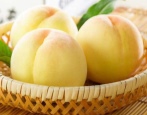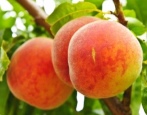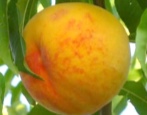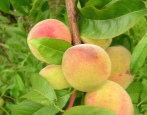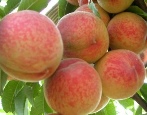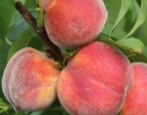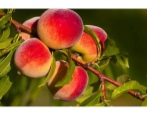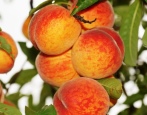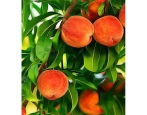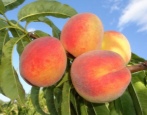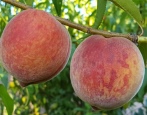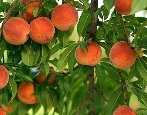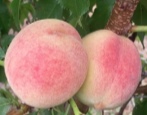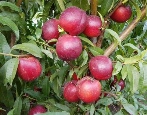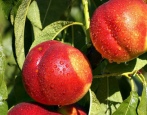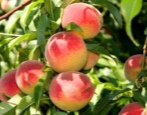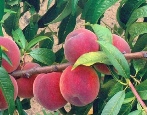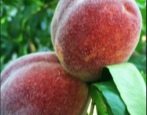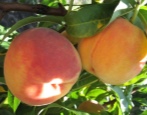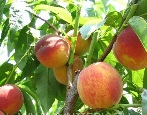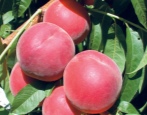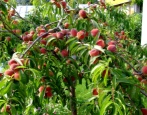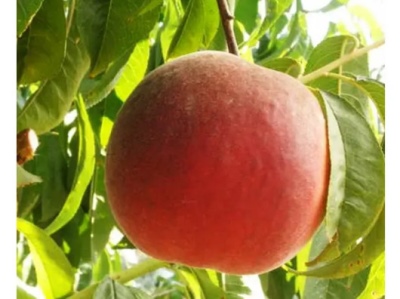
- Landing scheme: 3,5 × 3,5
- Authors: American selection, Floyd Seiger
- Name synonyms: Royal Lee
- Ripening period: late
- Self-fertility: self-fertile
- Appointment: for fresh consumption, for canning, for making juices
- Yield: high
- Marketability: high
- Transportability: good
- Separability of the bone from the pulp: good
The peach tree is the result of selection; it does not occur in the wild. It is an improved hybrid of almonds, plums, apricots, on the basis of which, through selection and numerous studies, grafts were derived. Currently, it is a plant that bears fruits of amazing taste and aroma. It has many varieties, differing in appearance, growing conditions. Frost-resistant varieties have been created. This is what the Royal Lee peach belongs to.
Description of the variety
Bred by American breeders. The fruit tree is tall, with a voluminous crown, is not afraid of the cold: it can withstand temperatures of -20 °, in more severe frosts it is necessary to cover it. Self-pollinated. Propagated by seeds (bone) and grafting. In May, bright pink flowers, similar to sakura flowers, bloom profusely.
The Royal Lee variety is not susceptible to diseases that affect fruit trees, it is immune to curliness and powdery mildew. It is not susceptible to pests, fruitful, and when it grows, it gives more fruit.
Fruit characteristics
Fruits are round, with a slightly noticeable downy, large, weighing 200-300 g. Ripe peaches have a dark red, almost burgundy color, thin, delicate skin. The pulp is yellow, fragrant, juicy, but firm. The bone is easily detached. Fruits tolerate transportation well, they are stored longer than other varieties.
Taste qualities
The taste is high. Royal Lee fruits are distinguished by a sweet taste, reminiscent of ripe pineapple, and a special aroma. They contain sugar, vitamins, and therefore have nutritional and medicinal value. They are best consumed fresh, but they are also suitable for processing.
Peaches make excellent compotes, preserves, jams, juice. They are used for fruit salads, decorating baked goods, making smoothies. Fresh are stored for a week. Peach oil is obtained from the seeds, which is used by pharmacologists and in the production of cosmetic products.
Ripening and fruiting
The variety is late, the fruit is harvested at the end of August, 4.5 months after flowering. The fruits reach full ripeness in about 15 days. The tree gives its first harvest 3-4 years after planting. Fruiting lasts up to 10 years.
Yield
The yield is quite high: if the plant is properly looked after, more than 20 kg of fruits are harvested from one tree. Especially good yields are obtained from 2-3 years of fruiting in the southern regions.
Growing regions
Peach Royal Lee belongs to late-ripening, harvesting of fruits falls on the beginning of autumn. Therefore, it is cultivated in the southern regions of Russia, in the foothills of the North Caucasus. In the Central, North-West regions, the fruits simply do not have time to ripen, they will remain sour, although the plants are resistant to cold. If climatic conditions permit, trees become not only a decoration of the garden, but bring a generous harvest of ripe fruits.
Growing and care
The seedling must have a developed root system, age 1-2 years. You can plant a tree in spring and autumn.Planting is done in the southern, sunny part of the garden. The soil needs light, fertile, groundwater should not be located high. Landing scheme 3.5X3.5 m.
Care and agricultural technology are simple: trees are watered several times per season, depending on the weather, fertilized once a year, sprayed in spring for prevention, cut off sick, dry shoots, forming a crown, cover for the winter. To improve fruiting, several self-fertile peaches or almonds are planted nearby so that they are cross-pollinated. Royal Lee does not like the proximity of plants of other species. But a single tree will also yield a harvest.
Despite the simplicity of care, there are points that need to be considered after planting a seedling. It is important to monitor the survival rate for the first 3 weeks, when the tree is in a permanent place. First of all, the plant is pruned, leaving shoots up to 50 cm.
Pay attention to regular, adequate watering, taking into account changes in weather. Experts note that the rejection of pruning during planting and the lack of moisture in the first weeks have a bad effect on the survival rate of the peach in a new place and can negatively affect further development.
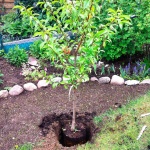
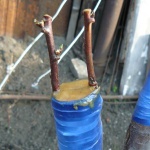
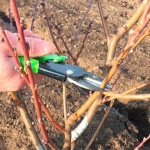
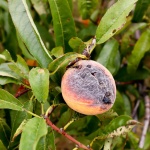
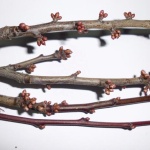
Review overview
Positive reviews prevail about the variety. Amateur gardeners from the southern regions of Russia note the ripening of peach fruits in the first half of August, good yield, easily separating pits, amazing taste: sweetness with notes of melon and watermelon. There are recommendations to monitor watering and feed them in a timely manner. Peach is an undemanding culture, responsive, for attention, correct planting, timely watering, feeding, it will thank you with an annual harvest of wonderful fruits.
